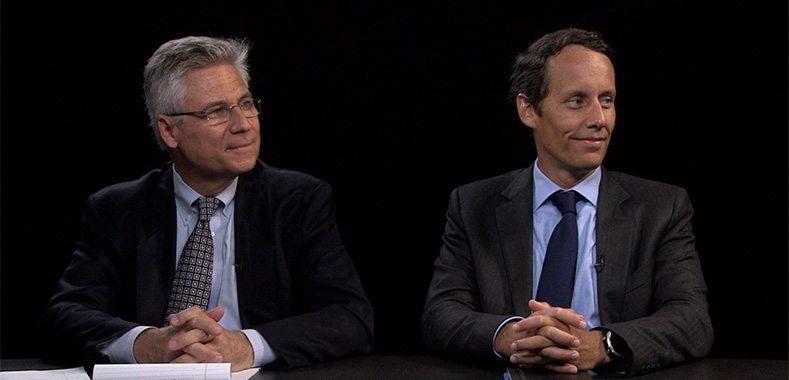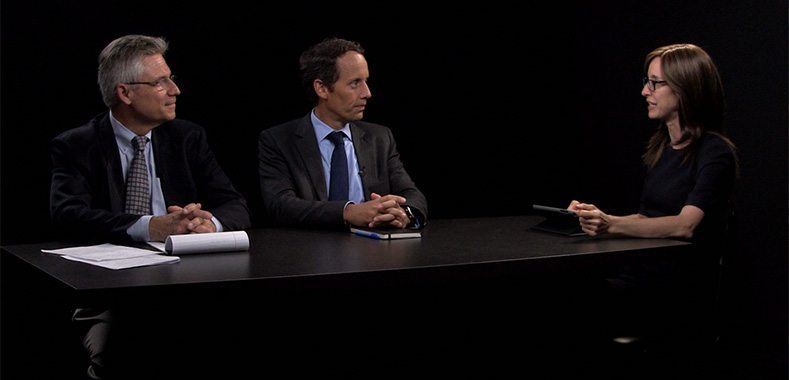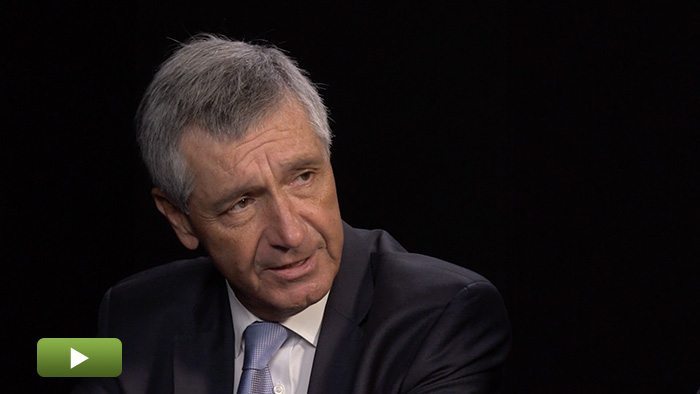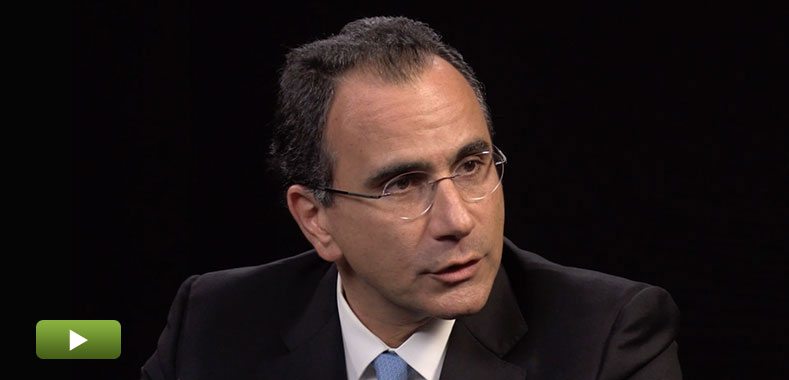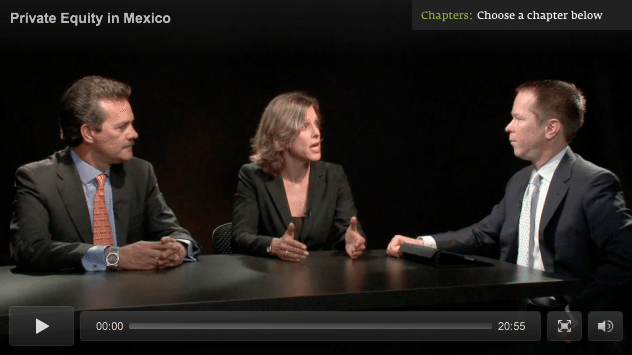Eyeing Debt Deals Amid Brazil’s Liquidity Crunch
This year may prove to be a volatile one for Latin America real estate markets, but there’s plenty of opportunity outside of the headlines, according to PGIM Real Estate Americas CIO Alfonso Munk and GID International senior managing director Ken Munkacy.
Warning that investors need to understand where the region’s markets will move in the next three to five years, rather than where they are today, both Munk and Munkacy say it’s a time to invest selectively in Latin America.
Transcript Download Transcript
Eyeing Debt Deals Amid Brazil’s Liquidity Crunch
Real Estate Investing in Latin America
Zoe Hughes, Privcap:
I’m joined today by Alfonso Munk, CIO of the Americas of PGIM Real Estate, and Ken Munkacy, Senior Managing Director of GID International. Thank you both for joining me today.
Ken Munkacy, GID International:
Nice to be here.
Alfonso Munk, PGIM Real Estate:
Thank you.
Hughes: There’s a lot of headline noise when we look to investing in Latin America. A regional economy in recession, falling commodity prices, struggling export demands—you’ve got Zika Virus, political mayhem, rising inflation. It’s leaving a lot of investors pretty scared. I do wonder, though, whether the headline risks are actually distracting us from some genuine opportunities within commercial real estate. Now, you’ve both had decades of experience investing in the region. When we look to the volatility that’s happening in Latin America, in these emerging markets, are you scared or excited?
Munkacy: I think you have to separate the static from the signal. I tend to view the Latin America markets as a series of strong markets and a series of damaged markets. And I think a lot of the fundamentals that underlie both of those are what you have to really look to.
It’s a question of which factors are relevant to investment decision–making and trying getting fund those flows. I think good investors look at the flows of demographics and market cycles and try and position themselves accordingly.
Munk: I think there’s a lot of noise in the market. As you said, it’s a lot of headline news, but you have to shift through those and go beyond those to see where the opportunities are. There’s headline news not only in Latin America, but everywhere around the world [that] are affecting everybody. Latin America is not immune. But first of all, you have to separate Latin America in different regions and countries. We’re typically lumped around as a single region, but if you look at countries like the two largest economies—for instance, Brazil and Mexico—they’re very different from each other. They’re very different from a macroeconomic and real estate-cycle perspective. Also, I think the real risks of the region are not the headline news, but are inherent risks that have been there for a while.
Hughes: Ken, I know you’ve previously said to me that there is a real natural pilot light within these markets—really a natural pilot light in terms of growth. Talk to me in regard to that. Where do you actually see the growth within Latin America? Talk to me about those fundamentals.
Munkacy: If you look at growth in terms of the young population, the new households, they are happening in markets like Mexico, where you have over 50% of the population that’s under 35. They create 600,000 households a year. By contrast, the U.S., with over three times the population, has about 1.2 million households. Brazil—it’s amazing. They’re 200 million people and they have the same household formation rate as the U.S.—about a million two, a million five. From an investor’s perspective, those are really opportunities to capitalize on.
They say good soccer players need to be where the ball is going, not where it is. And I think that’s very true in investing in Latin America. You have to be where the markets are moving in the next three to five years rather than where it’s now. And, as Alfonso noted, those headlines from a foreigner’s perspective are so palpable and so scary and intimidating, whereas I think really smart money understands that there’s that short-term static, but the long-term is really towards an uplift of the middle class and uplift of college graduates. Mexico just had 15% year-in-year college graduation rates in the last decade. That’s phenomenal. That supports the industrial sector. It supports the retailing and the residential and it’s kind of a domino effect because of the demographics. You see that across the board. Some are just more accentuated.
Hughes: Where is the game going over the next three to five years? Where are you actually focusing your activities?
Munk: We focus on the large markets. Ken noted Mexico—it’s probably our largest market right now. We have very positive yield on Mexico because some of the things Ken mentioned—the household formation, the middle class, the young population. Also, the fact that it’s a very manufacturing-driven country; it’s become very competitive with what’s happening in China and the rising the costs in China.
We like that story. We like industrial particularly because it’s really the engine of Mexico. It’s what’s driving the economy and, beyond that, it’s making other sectors grow.
Hughes: I do have to ask about Brazil because obviously that is dominating all the headlines in terms of—I will say—just the mayhem and the static. Every time you think about Latin America and volatility, you obviously look to Brazil. Talk to me about how you go through that static. How do you actually find those opportunities and what are you looking at?
Munk: You have to be really careful. Brazil is a double-edged sword. On one hand, it’s a very large country. As Ken mentioned, [it’s a] big population, with a lot of natural resources, huge growth. But on the other hand, it’s a very unstable, complicated country to do business. And the cost of doing business is very high just because of a lot of the reasons you’re seeing right now. Politically, it’s unstable. Macro-economically, it’s volatile with respect to either inflation or interest rates or currency.
I think this noise is making it more interesting because a lot of people are walking away from Brazil. It’s been the darling of Latin America over the last seven to eight years, and people have just gotten a bit burned with it. So, it’s opening a lot of opportunities in our view.
Munkacy: I think for the smaller investors and the smaller funds or family offices, it’s trying to take advantage of some of the dislocation. The thing that’s most troubling to me is that there’s been a huge disintermediation going on. The savings rates are way down. There’s lack of credit. The foreign investor money dried up. That’s a good thing on one level for real estate investors, but for the rank–and–file consumers there, that’s a troubling theme because their unemployment is rising.
Inflation is still unwieldy. The Selic rate is still very high and I’ll agree with your point: the political economy is a real mess and it just casts a pall over the whole market. There’s not a lot of visibility there, the double-edged sword being do you want to grab that falling knife right now and take that lower base at this point, or is it going to go to another level?
Hughes: I was going to ask in terms of valuation risk—is the opportunity now in debt products, where you’re actually building in some kind of upside? Talk to me about valuation risk. Isn’t that a huge—like you’re saying, could this go even further down?
Munkacy: That’s the big question. I think the good moment now for Brazil, just because the lack of liquidity, is in structured debt products—participating debt with kickers and at least you’re having a floor rate that if you’re comfortable, your downside is protected and it’s okay to give up some upside. Because that’s the real bet and the gamble. When’s it going to come, how much it will be and is it ever going to be real or materialize? When we start to look at Brazil back in ’08, people are talking IRRs in the 40s, and that quickly descended. So, having a structured product where you can protect your IRR and protect your whole-dollar returns and let your partner continue to drink the Kool-Aid of the upside—that’s fine with us. It’s not a case where greed is good.
Hughes: Alfonso, is Brazil now a debt opportunity?
Munk: I’d rather do a 20% IRR than a 40% potential IRR. Ken mentioned the Selic. Selic is the base interest rate, equivalent to the prime interest rate in the U.S. It’s at 13.25%, so we are lending in Brazil at an 18% rate, with some kickers and some structures, given the lack of liquidity in the market. Banks are not financing. Nobody’s providing any credit. You have developers or real estate owners that need to finish up fully-sold product or residential product that have no capital to finish an existing building. So, we come in and provide that rescue capital at 18% or 20% rates nominally, which we think, given that you’re protecting yourself from valuation risk—even that you’re going into the debt at leverage levels of let’s say 50% to 70%—you have a good risk-adjusted investment and we really like it.
Hughes: Ken did talk about that rising unemployment and I’m looking to the fundamentals. Where is the job growth? Where’s the wage growth? If you don’t have those, how does that really fuel the fundamentals of commercial real estate investment? Is that not a little bit of a concern?
Munk: It is, but you have to select the right sectors. Brazil’s economy, as opposed to Mexico, is based on commodities and internal consumption. Obviously, it’s the largest country in Latin America, with 200 million people. It has a very strong middle class that has grown over the last 10 years and [it has] a lot of consumption. Then, it exports commodities. Obviously, commodities have come down but there are certain sectors of the economy in Brazil that are still very competitive. For instance, exports of soy, sugar and ethanol—all of the agricultural-producing regions of Brazil are still doing pretty well.
I think you have to, again, sift through the headlines. There is more unemployment. There’s still a very large economy with no credit, so no matter what happens, we are believers that it’s still going to be a very important economy in the world. It’s the sixth largest economy in the world.
Munkacy: Those are all good points, because it’s in this transition moment. As a friend of mine down there likes to say, Brazil’s not dead, it just smells funny, and on a lot of levels. But all kidding aside, it’s transitioning from a consumer-oriented society, where that was 80% of the GDP, to hopefully more investment-oriented. That’s what they really have to get right.
Hughes: Alfonso, as we look to 2016 and we look to the region, is this the year that Latin America really comes into its own?
Munk: Unfortunately, probably not. I think one of the unfortunate things in Latin America is it was an eternal promise. People think as the Mexico days. The Mexico moment is a Brazil moment and I think it’s not going to happen in 2016. What I see in 2016, given the volatility, is some people have walked out of the market because of the headline risk that you have mentioned and the volatility and the concerns about Brazil. People been walking away from Brazil for the last year and a half or two years. So, for those who shift through those headlines, I think there’ll be very good opportunities to invest.
The capital has dried up in a lot of parts of the region, including Mexico. The capital markets have dried up a little bit. I think for those who have a long-term view of the region, such as PGIM Real Estate, we will find much interesting opportunities. But I don’t think it’s going to be the year of Latin America.
Munkacy: I’m going to veer off of agreement for a moment and say that I think it’s a year of selective investment. I don’t think there’s going to be net investors as much as there’ll be net lenders, because I really think the debt side needs to be active. There’s just liquidity crunches everywhere you see, particularly in Brazil.
It also matters what your investment timeline and horizon is. If there are investment fund managers that have a seven-year fund life, you might be a little stressed. But, if you have a longer view, I think you’ll do well because getting in now at a low basis in some of these markets—and certain asset classes, it’s all about a basis play, like in housing for rental housing or for retail or for logistics. Land’s not going to get any cheaper in these markets, so there is upside there. But again, you have to be very cautious overall.



